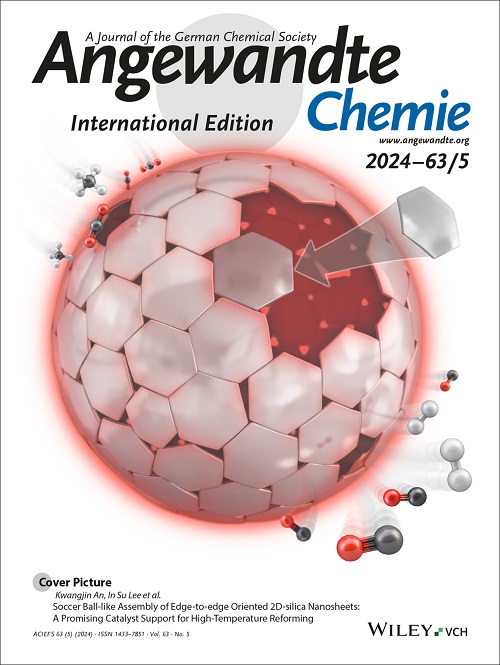Controlling the chirality of Metallo-cages by Manipulating the Stereochemistry of the Metal Centers
IF 16.1
1区 化学
Q1 CHEMISTRY, MULTIDISCIPLINARY
引用次数: 0
Abstract
Precise control over the chirality of metallo-cages by maniplating the stereochemistry of metal centers is important in many practical applications, but is extremely challenging. In this study, two isostructural metallo-cuboctahedra (1-ZnII12L18 and 2-CdII12L18) have been assembled using ligand L1 and two kinds of metal ions (ZnII and CdII) with similar coordination lability. The chiral-induction by the same guests (D-/L-camphorsulfonate, D-/L-SCS) results in a completely opposing stereochemical output of 1 and 2: D-SCS induced host-guest complex of [D-SCS⊂Δ12-1] and [D-SCS⊂Λ12-2], respectively, with reverse handedness. The distinct stereochemical configuration of metallo-cuboctahedra can be manipulated by participant metal ions that exhibit similar dynamics. Furthermore, a subtle variation of the ligand peripheral substituent group facilitates spontaneous resolution of metallo-cuboctahedra 3-ZnII12L28 from a racemic mixture as (R24, Λ12)-3/(S24, Δ12)-3 enantiopure entities. The dynamic stereochemistry of MII12L8 cuboctahedra described in this work allows a chiral manipulation based on the nature of metal centers and ligands, enabling the design and control of the chirality of metallo-cages.通过操纵金属中心的立体化学来控制金属笼的手性
本文章由计算机程序翻译,如有差异,请以英文原文为准。
求助全文
约1分钟内获得全文
求助全文
来源期刊
CiteScore
26.60
自引率
6.60%
发文量
3549
审稿时长
1.5 months
期刊介绍:
Angewandte Chemie, a journal of the German Chemical Society (GDCh), maintains a leading position among scholarly journals in general chemistry with an impressive Impact Factor of 16.6 (2022 Journal Citation Reports, Clarivate, 2023). Published weekly in a reader-friendly format, it features new articles almost every day. Established in 1887, Angewandte Chemie is a prominent chemistry journal, offering a dynamic blend of Review-type articles, Highlights, Communications, and Research Articles on a weekly basis, making it unique in the field.

 求助内容:
求助内容: 应助结果提醒方式:
应助结果提醒方式:


